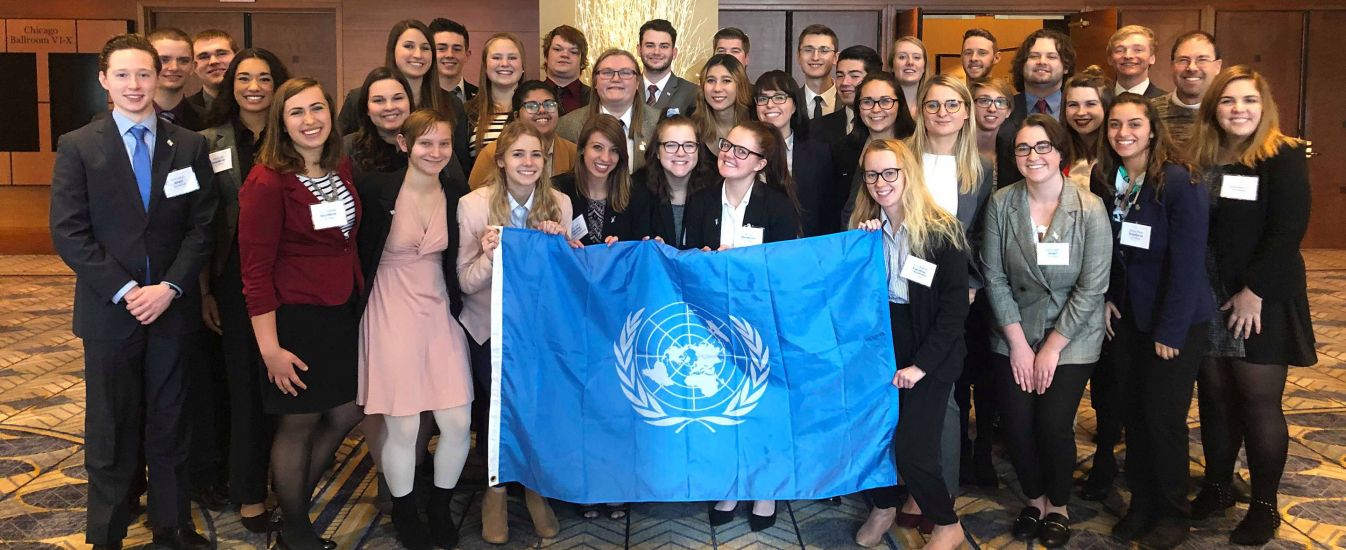UN High Commissioner for Refugees Topic 1
Stopping Religious Persecution
As defined by Article 1(A)(2) of the 1951 Convention, as amended by its 1967 Protocol, refugees are those displaced from their country of habitual residence and are unable or unwilling to return due to fear of being persecuted for reasons of race, religion, nationality, or membership of a social or political group (Refugee Definition). The Universal Declaration of Human Rights, in Articles 2 and 18, and the Human Rights Covenant lay out the primary rights pertaining to religious freedom (UNHCR).
The largest international agreement passed on the protection of refugees worldwide is the UNHCR’s 1951 Convention Relating to the Status of Refugees. Within the convention there are three major fundamental principles, including non-discrimination, non-penalization, and non-refoulement (Convention and Protocol Relating to the Status of Refugees). Non-discrimination means provisions for refugees are supposed to be applied without discrimination due to race, religion, gender, country of origin, or any other factor (Convention and Protocol Relating to the Status of Refugees). Non-penalization ensures that refugees and asylum seekers shall not be punished (criminally or arbitrarily detained) on the basis of solely seeking refuge (Convention and Protocol Relating to the Status of Refugees). Finally, non-refoulement “provides that no one shall expel or return (“refouler”) a refugee against his or her will, in any manner whatsoever, to a territory where he or she fears threats to life or freedom” (Convention and Protocol Relating to the Status of Refugees). These three tenants are the basis for the treatment of refugees among state’s that have become party to the convention.
At the end of 2022 there were over 108 million forcibly displaced persons in the world, and around 29 million of those were considered refugees by the UNHCR (Global Trends Report 2022). According to the United States Commission on International Religious Freedom, of those 29 million “Two-thirds of these refugees are from five countries, which include three countries with systematic, ongoing, and egregious persecution of various religious communities” (Maenza et al.). Despite the high numbers of refugees in today’s world, the UNHCR and individual states are working to mitigate the impacts of religious persecution in both refugees’ home and host countries. In the midst of the COVID-19 pandemic, the UN Refugee Agency partnered with Religions for Peace to create a diverse, multireligious council to advise the UNHCR on humanitarian and displacement issues (Welsh). This effort will continue until December of 2023 when the Global Refugee Forum is held. While this partnership has aided the UNHCR in multireligious issues leading up to the forum, there are continued issues of displacement and fear among refugees fleeing from religious persecution.
It is your responsibility as a delegate to continue the work of the UNHCR on mitigating and eliminating religious persecution among refugee communities worldwide. Whether that be through continuing the work of the UNHCR’s past policies, creating new ones, enforcing existing ones, or something entirely new and innovative to address the continuing issue of displacement due to religious persecution.
Questions to Consider:
- Is your country party to the UNHCR’s 1951 Convention Relating to the Status of Refugees? Are you party to the 1967 supplemental protocol? If so, why? If not, why not?
- Is your country taking in many [religious] refugees? How do your citizens react to the influx of refugees?
- What are the religious majorities and minorities in your country?
- Is your country persecuting one or multiple religious minorities?
- What has your country done to prevent religious persecution?
Resources to Consider:
“ABOUT UNHCR.” UNHCR, www.unhcr.org/about-unhcr. Accessed 26 July 2023.
“Convention and Protocol Relating to the Status of Refugees.” UNHCR, www.unhcr.org/media/convention-and-protocol-relating-status-refugees . Accessed 26 July 2023.
“Countries: The Global Compact on Refugees: UNHCR.” The Global Compact on Refugees | UNHCR, globalcompactrefugees.org/compact-action/countries . Accessed 26 July 2023.
Finder, Source: UNHCR Refugee Data, and More reports and publications. “Global Trends.” UNHCR, www.unhcr.org/globaltrends/ . Accessed 26 July 2023.
“Refugees and Migrants.” United Nations, refugeesmigrants.un.org . Accessed 26 July 2023.
Richmond Chambers. “What Is ‘Persecution’ under the Refugee Convention?” Richmond Chambers, 27 Jan. 2020, immigrationbarrister.co.uk/what-is-persecution-under-the-refugee-convention/#:~:text=In%20order%20to%20fall%20within%20the%20definition%20of,opinion%20or%20membership%20of%20a%20particular%20social%20group
Works Cited
Chambers, Richmond. “What Is “Persecution” under the Refugee Convention?” Richmond Chambers, 31 Jan. 2020, immigrationbarrister.co.uk/what-is-persecution-under-the-refugee-convention/#:~:text=In%20order%20to%20fall%20within%20the%20definition%20of . Accessed 30 June 2023.
Convention and Protocol Relating to the Status of Refugees. 1951, www.unhcr.org/sites/default/files/legacy-pdf/3b66c2aa10.pdf. Accessed 30 June 2023.
Global Trends Report 2022. UNHCR The UN Refugee Agency, June 2023, www.unhcr.org/global-trends-report-2022 . Accessed 30 June 2023.
Maenza, Nadine, et al. OVERVIEW of REFUGEES FLEEING RELIGIOUS PERSECUTION GLOBALLY UNITED STATES COMMISSION on INTERNATIONAL RELIGIOUS FREEDOM. United States Commission on International Religious Freedom, May 2022.
“Refugee Definition.” UNHCR, 2023, emergency.unhcr.org/protection/legal-framework/refugee-definition . Accessed 1 July 2023.
Welsh, Teresa. “UNHCR Partners to Create Multireligious Advisory Council on Refugees, Displacement.” Devex, 22 Sept. 2020, www.devex.com/news/unhcr-partners-to-create-multireligious-advisory-council-on-refugees-displacement-98146#:~:text=Religions%20for%20Peace%20uses%20its%2090%20national%20and . Accessed 30 June 2023.
UNHCR, the UN Refugee Agency | UNHCR, ww.unhcr.org/sites/default/files/legacy-pdf/5ddfcdc47.pdf . Accessed 26 July 2023.

